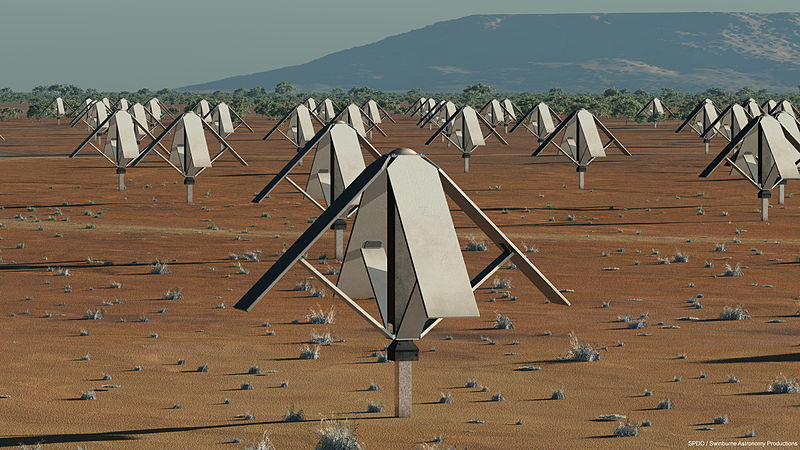Big astronomy and mega surveys
Interview with
Before we can ask what life might look like on planets orbiting other stars, weArtist first need to find those planets in the first place. This involves pointing our telescope at thousands of stars to find for tiny fraction that show evidence of planets circling around them. This type of huge scale project is becoming widespread in astronomy, bringing together vast numbers of researchers and often costing hundreds of millions of pounds. Some people have dubbed these projects 'mega surveys' and Dominic Ford asked Professor Andy Lawrence from the University of Edinburgh what the term means...
Dominic - So, why were astronomers suddenly so interested in these very big data sets? Is it because we're tackling difficult problems that need very large amounts of data?
Andy - They certainly are examples. This happens repeatedly, but it's not new. There's always been big things, IRAS recently, WISE, the first made infrared survey. So, there's been a long tradition, but there are some problems where you just need extremely large amounts of data.
It can be because the thing you're studying is physically big on the sky, like making a map of the Milky Way, looking at its structure. Sometimes it's because you simply need extremely large numbers of objects. So, the interesting modern example is weak lensing. It's trying to map out where the dark matter is by looking at distortions of galaxies caused by the light moving through the ripples of space time caused by the dark matter. Any one galaxy, this distortion is a tiny effect, but if you look in lots and lots of galaxies and see if it's systematically in the same direction and in one piece of sky, then you can figure out what's going on with the dark matter. And then to make a map with the dark matter and look at its structure, you need to repeat that in lots of positions on the sky. So, to do that, you need millions and millions of galaxies. You need to beat down the noise, get accurate measurements and to see it at all, you just need lots and lots of galaxies.
Dominic - I guess, one factor has been that we've only recently have the computers that can process these huge volumes of data.
Andy - That's true and in fact, the ambition of surveys and the capability of our computers are always kind of leapfrogging each other. So, I think that's always been true but certainly at the moment, the new things we're contemplating needs some pretty serious processing power.
The big hope for lensing is the Euclid space mission which should be launched hopefully about 2019. It will make measurements of these distortions of galaxies from space which will be very accurate, but processing the data to eke out the information is going to be very hard work.
The new thing that's exciting people is looking at the sky repeatedly to see things that change. That's starting right now. On a small scale, very bright things like SuperWASP looking for exoplanet transits and so on. At a much deeper level, Pan-STARRS which I'm working on is very exciting, looking for supernovae, for quasars doing strange things. So, you need to cover the sky repeatedly and you're looking for very rare things, so you need, for instance, to look at the sort of titled disruption events that I'm looking for in the nuclei of galaxies. They're very rare. It happens in one galaxy out of every 100,000 or maybe a million per year. So, you got a look at millions of galaxies repeatedly because one of them will go bang. It's the classic 'needle in a haystack' problem.
Dominic - I guess this has been quite a big societal change in astronomy in that, it takes a lot of telescope time to do these big surveys, so you have these very big collaborations of people working on them.
Andy - You do and people often worry that astronomy is becoming more like particle physics. It's all being done by giant collaborations and you have to do what the Prof tells you and so on. But for me, part of the joy of surveys is actually that - although we do have big projects and Planck was the classic example recently. With a survey, you can recreate the sort of anarchic individualistic approach that astronomers love because you get a professional team together to collect the data, make the database, make the query interface, and so on. Once you've done all that, then any smart postdoc can just get in there, have a smart idea, search through the data, find something new and interesting. So, it doesn't mean that astronomy has to be done in large faceless Stalinist teams as it were and we can keep our anarchic approach. So for me, that's very much a part of why surveys are important.
Dominic - So, we're seeing from very large projects at the moment like the European Extremely Large Telescope and the Square Kilometre Array. But we also do see some smaller projects like SuperWASP which I think was really built on a shoestring.
Andy - I think that we're very likely to keep a mix of the big and small, but there is a pressure towards bigger things, just because we're always wanting to collect more and more data to look at fainter and fainter objects. On the other hand, there's always new ideas that are usually first explored with a relatively modest facility. So, I think we'll have both, but there will be more and more big science
- Previous Evolution of cancer drug resistance
- Next The Dark Universe










Comments
Add a comment